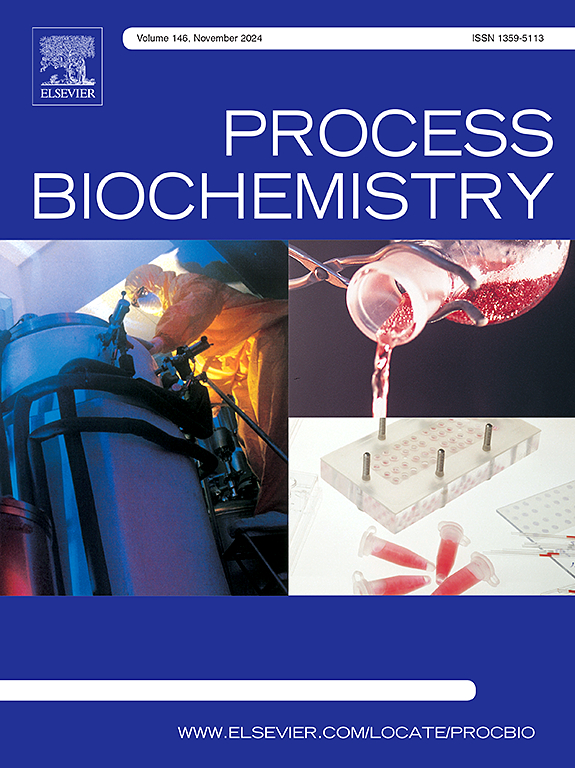Synthesis of structured lipids using microalgae oil and capric acid via a two-step enzyme reaction
IF 3.7
3区 生物学
Q2 BIOCHEMISTRY & MOLECULAR BIOLOGY
引用次数: 0
Abstract
n-3 Docosahexaenoic acid (n-3 DHA) and n-6 docosapentaenoic acid (n-6 DPA) are contained abundantly in microalgae oil. The present study aimed to synthesize structured triacylglycerol (TAG) with n-3 DHA, n-6 DPA, and capric acid via a two-step lipase-catalyzed reaction. Microalgae oil and capric acid were used as substrates to synthesize structured TAG. In the first step, n-3 DHA and n-6 DPA were effectively enriched from an initial value of approximately 53–86 mol% in the glycerides of the microalgae oil obtained via Lipozyme RM IM-catalyzed ethanolysis. The optimum conditions for ethanolysis were a temperature of 25 °C, an enzyme loading of 15 %, and a molar ratio of 1:1 (fatty acid in microalgae oil to ethanol). In the second step, capric acid was incorporated into the hydroxyl group of glycerides obtained through ethanolysis to synthesize structured TAG using two different lipases. The effects of temperature and vacuum on TAG conversion were investigated to optimize lipase-catalyzed esterification. For both lipases, the optimum conditions were a temperature of 60 °C and a vacuum of 5 mmHg. Maximum TAG conversion was achieved with Lipozyme 435, whereas Lipozyme RM IM exhibited higher regiospecificity toward the sn-1,3 positions of TAG.
求助全文
约1分钟内获得全文
求助全文
来源期刊

Process Biochemistry
生物-工程:化工
CiteScore
8.30
自引率
4.50%
发文量
374
审稿时长
53 days
期刊介绍:
Process Biochemistry is an application-orientated research journal devoted to reporting advances with originality and novelty, in the science and technology of the processes involving bioactive molecules and living organisms. These processes concern the production of useful metabolites or materials, or the removal of toxic compounds using tools and methods of current biology and engineering. Its main areas of interest include novel bioprocesses and enabling technologies (such as nanobiotechnology, tissue engineering, directed evolution, metabolic engineering, systems biology, and synthetic biology) applicable in food (nutraceutical), healthcare (medical, pharmaceutical, cosmetic), energy (biofuels), environmental, and biorefinery industries and their underlying biological and engineering principles.
 求助内容:
求助内容: 应助结果提醒方式:
应助结果提醒方式:


